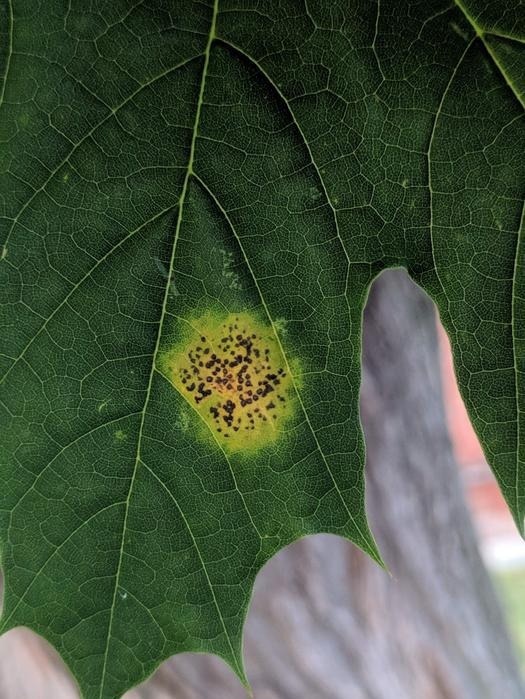Reviewed by Danielle Ellis, B.Sc.Oct 4 2023
Diseases play a significant role in causing tree mortality, impacting both forested areas and urban environments. The constant introduction of new diseases and the ability of pathogens to adapt to different hosts pose a continuous threat to a growing number of tree species.
 Tar spot on maple in Frostburg, MD, USA. Image Credit: Tar spot on maple in Frostburg, MD, USA
Tar spot on maple in Frostburg, MD, USA. Image Credit: Tar spot on maple in Frostburg, MD, USA
When these emerging diseases encounter new hosts, they can lead to mortality rates that were previously unheard of within their native ecosystems.
While not all diseases lead to the direct death of their host trees, many can exert a profound impact on host populations. For instance, in the 20th century, chestnut blight, one of the most renowned tree diseases in North America, essentially eradicated the chestnut as a dominant overstory tree in its native Appalachian Mountains region.
The emergence of sudden oak death in California, ash dieback in Europe, and butternut canker in the eastern United States were also witnessed. These diseases all carry the potential to eradicate host tree populations and bring about substantial alterations to the ecosystems in which they are present.

Image Credit: ON-Photography Germany/Shutterstock.com
“The continued emergence and accumulation of new diseases increases the likelihood of a particularly detrimental one emerging, and harming host tree populations,” notes Dr Andrew Gougherty, Research Landscape Ecologist at the USDA Forest Service.
Lately, the researcher has been delving into areas where tree diseases have proliferated most rapidly and assessing which tree species bear the greatest brunt of these new diseases. This data has the potential to assist researchers and land managers in forecasting where new diseases might be most prone to surface.
The study, which has been recently published in the open-access journal NeoBiota, scrutinizes more than 900 newly reported disease cases affecting 284 tree species across 88 countries. It quantifies the geographical accumulation of emerging infectious diseases and their impact on various host species.
The ‘big data’ approach used in this study helps to characterize the growing threat posed by emergent infectious diseases and how this threat is unequally distributed regionally and by host species."
Dr Andrew Gougherty, Research Landscape Ecologist, USDA Forest Service
Dr Gougherty found that the number of emerging diseases has accumulated rapidly over the past two decades.
“The accumulation is apparent both where tree species are native and where they are not native, and the number of new disease emergences globally were found to double every ~11 years,” he details.
Dr Gougherty's analysis of trees reveals that pines have accumulated the highest number of new diseases, followed by oaks and eucalypts. He attributes this trend to their extensive native distribution in the Northern Hemisphere and the widespread establishment of pine forests worldwide. While Europe had the highest overall accumulation of new diseases, North America and Asia closely followed suit.
Furthermore, his research indicates a higher prevalence of emerging tree diseases in regions where tree species are native, as opposed to non-native species. This pattern, however, does not hold true for Latin America and the Caribbean, likely because most of the assessed trees in this region are not native species.
Unfortunately, there is little evidence of saturation in emergent tree disease accumulation. Global trends show little sign of slowing, suggesting the impact of newly emerged diseases is likely to continue to compound and threaten tree populations globally and into the future. Climate change is likely also playing a role, both by creating more favorable conditions for pathogens and by stressing host plants.”
Dr Andrew Gougherty, Research Landscape Ecologist, USDA Forest Service
Source:
Journal reference:
Gougherty, A. V. (2023). Emerging tree diseases are accumulating rapidly in the native and non-native ranges of Holarctic trees. NeoBiota. doi.org/10.3897/neobiota.87.103525.